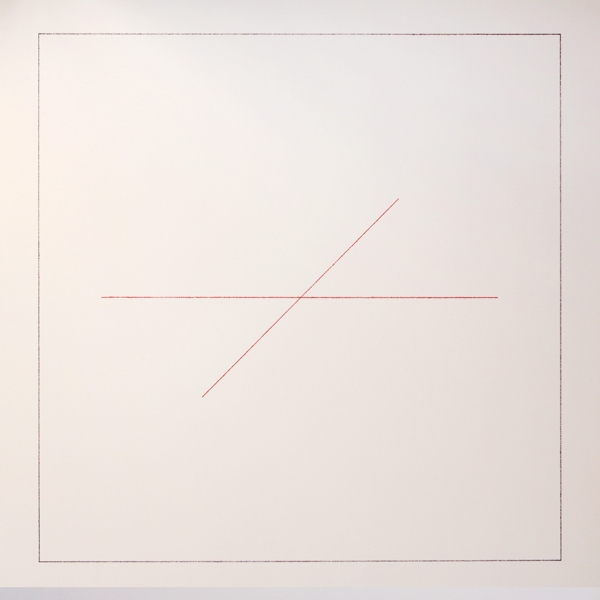This post is part of a series of blog posts called Noteworthy Artists and
Artworks. For more information about the series, please read Series Breakdown:
Noteworthy Artists and Artworks. You can find the link at the end of this post.
Sol Lewitt was an American artist and he was born in Hartford, Connecticut, 9th
September, 1928 A.D. Unfortunately, Lewitt died on the 8th April, 2007 A.D. in
New York. His work involved a wide range of disciplines including drawing, print
making, photography, painting and sculpture. Although, he preferred the term
“structures” for his three-dimensional work. He was mostly linked to the
Conceptual and Minimalism art movements.
Lewitt made many artworks throughout his life. But, in keeping with wanting to
produce a piece of text that is of reasonable length, I will mention only one:
Wall Drawing 164. It is currently on show at Massachusetts Museum of Modern
Art (MMoA), as part of an ongoing exhibition called Sol Lewitt: A Wall Drawing
Retrospective.
For those not familiar with Lewitt's work, he would provide, on a regular basis,
instructions for people to follow when creating his pieces. I don’t want to go
into too much detail here, but hopefully the instructions provided for Wall
Drawing 164 by MMoA will give you a sense for how Lewitt approached this aspect
of his work. They are as follows,
“A black outlined square with a red horizontal line centred on the axis
between the midpoint of the left side and the midpoint of the right side and a
red diagonal line centred on the axis between the lower left and upper right
corners.”
 Figure 1: Wall Drawing 164, by Sol Lewitt
Figure 1: Wall Drawing 164, by Sol Lewitt
Wall Drawing 164 (figure 1) consists of a black outlined square and two red
lines with it. This is a rather simple and clean image but its use of line is
the influential part for me. It is also worth noting, my tendency for using
lines as an element/building block is encouraged by works like this.
Lewitt has helped instil the notion of lines having conceptual and physical
attributes. Each line is an element with its own identity but it/they can
operate within a group which strives for something beyond itself.
This next observation can be associated with other artists (as well), but Lewitt
is a strong example of how it is used in action. The defining of constraints or
frameworks to operate within is a tactic I employ regularly. Usually, I call
them "rulesets" and have them operate in a similar fashion to Lewitt's
instructions.
The idea of creating a framework to operate in is arguably one of the
cornerstones of my work. The devising and applying of one is to intentionally
restrict or constrain. Although, applying "unable to operate beyond an arbitrary
threshold" to produce work is done with the intention of nurturing an artwork
into existence. It is not an act of negative suppression. What I mean by that is
all self-applied restrictions are kept relatively simple and intended to keep me
focused and committed to my belief of “One piece. One idea”. They are not there
to make the task needlessly difficult.
So, to sum up, Sol Lewitt was an American artist, born in 1928 and died
in 2007. He worked in various mediums and was most commonly known as a
conceptual artist. The areas he has influenced me the most are my aesthetic
persuasion for minimum usage of line and my understanding of the line as an
individual element, as well as part of a collective. Also, Lewitt’s use of
instructions has informed my understanding of constraints within the art-making
process.
Links
����������������